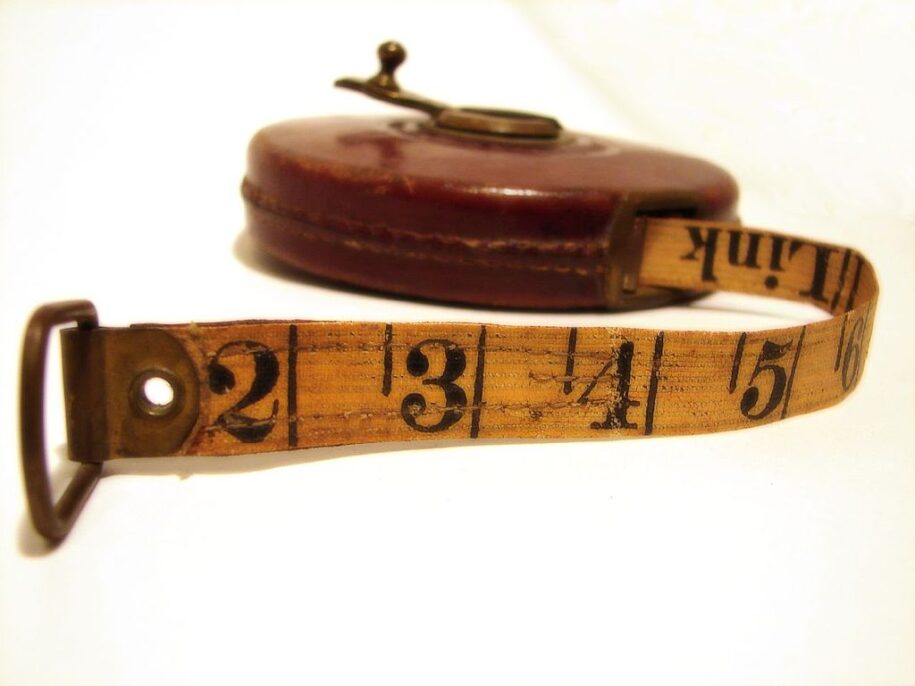Currently hanging in my closet, you’ll find a kaleidoscope of dresses from size 6 to XL. Weirdly, despite the wildly different sizes on their tags, they all actually fit me pretty well. I’m an 8 in Tahari brand, a 10 in INC brand, and L or XL in anything from Asia. You get the picture. Like millions of American women, I’ve been required by retailers to cultivate a highly-sophisticated sixth sense just to suss out what size will work for me in any given label, because fit varies seismically.
Several of my go-to retailers, acknowledging their erratic sizing, place a gauge by each item on their site indicating whether the item runs small, true to size, or large, according to user reviews. Inevitably, I’ll still read through the reviews and do mental gymnastics to get a feel for whether this particular blouse stands a chance of buttoning. [Note to retailers: Admitting your problem is the first step, for sure, but how about taking steps to solve it?]
And while I sometimes feel like the only woman who wears three different sizes while staying the same weight, I’ve got loads of company. In fact, 89 percent of consumers report being frustrated by inconsistent sizing, according to a study by Rakuten Fits Me, a size and fit solution provider that works with manufacturers to reduce sizing friction. Four out of five women, according to the same survey, would love to ditch the whole notion of sizing in favor of being served only items that fit. That’s the approach Nordstrom is taking by adding a tool to their site in effort to stamp out vanity sizing and simplify shopping. Search for a size 10 and you’ll be served up dresses that are most similar to a size 10 measurement, no matter what their tags say.
But what is a size 10 measurement, anyway? That’s open to interpretation. The US Department of Commerce did away with standardized sizing (developed in the 1940s) in 1983, greenlighting brands to develop their own idiosyncratic sizing. I don’t totally mourn the loss of universal sizing — this article in Time Magazine illustrates the reasons why it didn’t work.
Still, letting arbitrary numbers be open to interpretation at thousands of brands — and in fact reducing women to these numbers — seems as ridiculously outdated and unnecessarily confining as a girdle.
I believe we’re moving to a post-size world. The standard will one day be clothes fit to our beautiful bodies — each unique as a fingerprint — rather than the other way around. In an age of supreme personalization, when 23andMe emails me wellness advice based on my DNA, consumers will soon demand the same of retail. Imagine having your measurements taken once, and retailers using your unique metrics to send you clothes that fit perfectly. After all, I’m not really a size 10, 12 or 14. I’m a size “Dana Todd.”
Would it require a major changes by retailers? Absolutely. But consider the costs saved in returns, which average 20–30 percent for online purchases. ASOS Chief Executive Nick Robertson has said just a 1 percent drop in returns would add $16 million to the company’s profit, according to the Rakuten report. Think of the ease of acquiring new customers when women have the assurance that the jeans will fit, and the increased lifetime value when they buy not just a play-it-safe shirt, but a few dresses too, with zero doubt.
While retailers may be a ways off from prioritizing personalized fit, I’m already doing it. In late October, we’re launching Balodana, a new way of shopping for clothes that fit. We’ll connect women with bespoke fashion designers around the world who create pieces — everyday basics to big night out — to their beautifully distinct dimensions, at prices that are completely down-to-earth. Balodana is springing from my love of fashion, my frustration with the failings of modern sizing, and my abiding belief that all women deserve to wear clothes as phenomenal as they are. I can’t wait to share it with you. Let the post-size revolution begin!

Image attribution:
Top photo by Louise Docker (Measuring time) [CC BY 2.0 (https://creativecommons.org/licenses/by/2.0)], via Wikimedia Commons
Bottom photo Pabak Sarkar https://www.flickr.com/photos/pabak/

